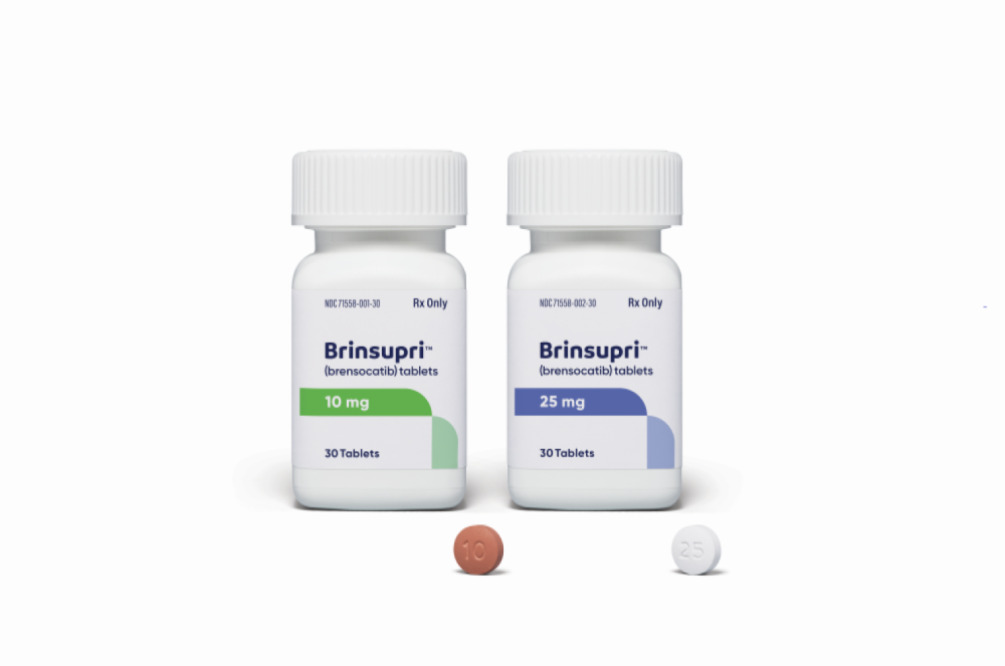
The lung disease bronchiectasis plays out as a vicious cycle. Infection leads to inflammation followed by the impaired ability to clear the excess mucus coughed up from the lungs. These problems lead to structural lung damage, and the cycle repeats. René Laennec, a French physician credited as the inventor of the stethoscope, first documented the chronic disorder in 1819. But its presence in medical literature for more than 200 years has been unaccompanied by a drug to treat it.
Bronchiectasis therapy has focused mainly on addressing infections and inflammation associated with the disease, making antibiotics and anti-inflammatory medicines part of the standard of care. For the first time, a drug is now available to stop an underlying cause of bronchiectasis. On Tuesday, the FDA approved Insmed’s brensocatib for treating non-cystic fibrosis bronchiectasis in adults and children age 12 and older. Bridgewater, New Jersey-based Insmed will commercialize its new medicine under the brand name Brinsupri.
While the FDA calculates between 230,000 and 430,000 people in the U.S. have bronchiectasis that is not caused by cystic fibrosis, Insmed estimates as many as 500,000 Americans have the disorder. The company expects that figure will grow. The first approved drug for a disease typically leads to more symptoms being reported and more patients being diagnosed, CEO Will Lewis said during a Tuesday afternoon conference call.
“You will see greater sensitivity on the part of the 27,000 pulmonologists in the U.S., who are now aware of a disease that has been around since 1819 and has its first drug approved to treat it,” Lewis said. “This is one of those patient populations that is very sizable but which has been a frustrating point for physicians because they’ve had nothing to treat the patient, and so it hasn’t been a high point of focus or motivation to diagnose them as such, because there’s nothing more frustrating for a physician than to diagnose a patient with a condition and not have a medicine available to treat them. For bronchiectasis patients, that changes today.”
Bronchiectasis is characterized by frequent exacerbations, symptom flareups in which patients experience worsening cough, mucus production, and shortness of breath. These symptoms can be managed with techniques, medical devices, and drugs that loosen and clear mucus. But such approaches do not alter the course of the disease, which can lead to permanent lung damage and lung function decline that can become fatal.
With Brinsupri, Insmed aims to intervene in the inflammation behind bronchiectasis. The drug is an oral small molecule designed to inhibit dipeptidyl peptidase 1 (DPP1), an enzyme that activates other enzymes in neutrophils, a type of white blood cell involved in immune and inflammatory responses. Insmed’s FDA submission for Brinsupri was based on results from a 24-week Phase 2 study and a 52-week Phase 3 clinical trial. Both placebo-controlled studies evaluated two doses, 10 mg and 25 mg.
Results for both doses in both trials showed statistically significant reductions in the annual rate of exacerbations compared to placebo. The studies also met secondary goals, including prolonging the time to first exacerbation and increasing the proportion of patients remaining exacerbation free over the treatment period. Lewis said having two doses give clinicians flexibility in treating their patients. The trial data also includes results showing the 25 mg dose led to statistically less decline in lung function as measured by forced expiratory volume in one second (FEV1), a measure of how much air can be forcefully expelled from the lungs.
Lewis said FEV1 gives clinicians another point of information to use as they determine how to treat bronchiectasis patients. In a note sent to investors, Leerink Partners analyst Joseph Schwartz said the 10 mg dose led to a slightly higher reduction in pulmonary exacerbations while the 25 mg dose exhibited disease modifying potential by slowing lung function decline.
“Given both doses have been approved, physicians can tailor treatment to best meet the specific needs of their patients,” Schwartz said.
The most common adverse events in the studies included upper respiratory tract infection, headache, rash, dry skin, and hypertension. The drug’s label includes a warning for skin reactions and advises patients to see a dermatologist if they develop new rashes or skin conditions. Gum and tooth problems were also observed in the studies and patients are advised to see a dentist while taking the drug.
Insmed set an $88,000 annual list price for Brinsupri, the same price for both doses. That’s higher on the higher end of the anticipated price range, Schwartz noted. Insmed projects the drug could achieve $5 billion in peak global revenue in the non-CF bronchiectasis indication alone. In a Leerink survey of pulmonologists last year, non-CF bronchiectasis was rated as the highest unmet medical need among respiratory disorders. Respondents believe the Phase 3 data for Insmed’s drug are compelling. The opportunity for a patient to remain exacerbation free was rated as one the drug’s most important attributes.
Insmed’s own survey found 90% of physicians indicated they were inclined to prescribe Brinsupri, Chief Medical Officer Martina Flammer said. She added that clinicians said they would focus on patients with two or more exacerbations in the last 12 months, which is consistent with the patient population enrolled in the drug’s pivotal study.
Insmed has potential competition on its heels. Last month, Merck agreed to pay $10 billion to acquire respiratory drug specialist Verona Pharma. Verona’s main asset is Ohtuvayre, a small molecule inhibitor of PDE-3 and PDE-4 enzymes that’s already commercialized as a treatment for chronic obstructive pulmonary disease (COPD). The biotech is also developing this inhaled drug for other disorders, including bronchiectasis. Ohtuvayre gives Merck a pipeline in a product opportunity in respiratory diseases.
Brinsupri is Insmed’s second FDA-approved product. The respiratory drug specialist is already known to pulmonologists through Arikayce, its inhalable drug for Mycobacterium avium complex (MAC) disease, a bacterial infection of the lungs. Brinsupri traces its roots to AstraZeneca, which initially discovered the molecule and advanced it to early clinical development. In 2016, Insmed paid $30 million up front for global rights to the drug. The pharmaceutical giant is eligible for up to $120 million in milestone payments, plus royalties from Insmed’s sales of the product.
Lewis said with FDA approval of Brinsupri, Insmed has unlocked a novel biological mechanism broadly applicable to neutrophil-mediated diseases. Clinical trials are underway that could support expanding the current formulation of Brinsupri to other indications. A Phase 2b test in chronic rhinosinusitis without nasal polyps is expected to report preliminary Phase 2b data later this year. The first part of a Phase 2 test in hidradenitis suppurativa is expected to post data in 2026. Lewis said Insmed is also exploring other formulations of the drug as a way to address other neutrophil-mediated disease, including rheumatoid arthritis, COPD, inflammatory bowel disease, and more.
“I would say this is the beginning of a broad potential applicability of DPP1, and we intend to pursue the clinical trials to validate that assumption,” he said.
Photo by Insmed





